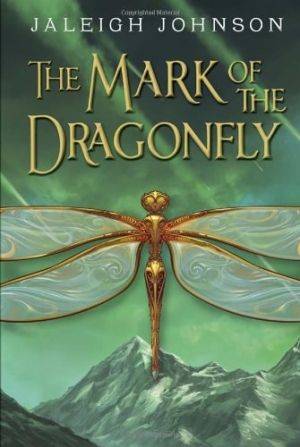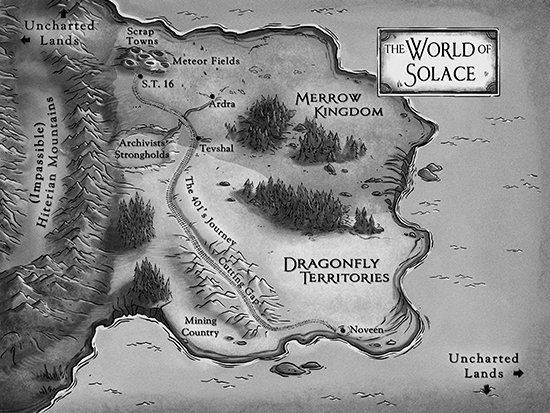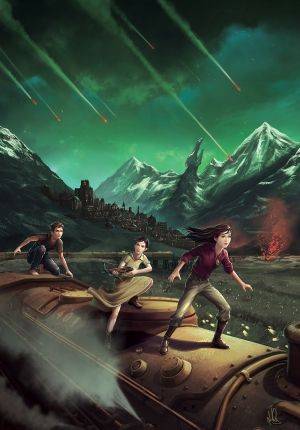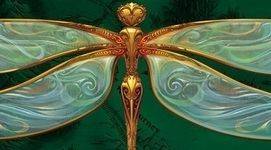I love a good story. More to the point, I love good characters used in the service of telling a good story. So much so that, over the years, I’ve started to overlook the occasional borrowed theme or certain redundancies in plot. (I read and enjoyed every one of Robert B. Parker’s Spenser novels, for instance, and couldn’t have cared less that the books started to read more and more like very urbane Mad Libs.)
But let me get back to the point.
 Good stories, in my experience, have interesting, compelling characters doing important things under mysterious or dangerous circumstances. Or, at least, that’s what happens in the books I like, and I’ve read a lot of those. What I have not read are many young reader novels, which are — as the name implies — aimed somewhere over the heads of “children’s literature” and somewhere short of the hormonal frenzy of “teen literature.” If you’re a little unclear on the differences between these types of books, you’re not alone. If it helps, think of it this way: at our local Barnes & Noble, the Twilight series is shelved in Teen, while the Harry Potter books are in the Children’s section.
Good stories, in my experience, have interesting, compelling characters doing important things under mysterious or dangerous circumstances. Or, at least, that’s what happens in the books I like, and I’ve read a lot of those. What I have not read are many young reader novels, which are — as the name implies — aimed somewhere over the heads of “children’s literature” and somewhere short of the hormonal frenzy of “teen literature.” If you’re a little unclear on the differences between these types of books, you’re not alone. If it helps, think of it this way: at our local Barnes & Noble, the Twilight series is shelved in Teen, while the Harry Potter books are in the Children’s section.
Call this middle-school literature, then. Tween Lit.
As a newcomer to this particular aisle of the bookstore, I went into reading Jaleigh Johnson’s The Mark of the Dragonfly with as open a mind as possible. Did I find ideas and even characters that were reminiscent of other books and pop culture? I did. Did I find myself comparing this book with others? Yep. But, the more I read, the less I cared about my critical touchstones and the more I thought about the children who might pick this book off the shelf or have it gifted to them by others. With no clear idea of what to expect, I found myself reading with two sets of eyes — those of an adult with an MA in Literature and those of a father whose four-year-old will all-too-quickly be progressing from The Monster at the End of This Book to The Chronicles of Narnia.
In Johnson’s swift, entertaining novel, our protagonist is Piper, who lives in Scrap Town Sixteen, which is in the Merrow Kingdom, which is located in the northern territory of a world called Solace. (Please save your questions for now. There’s a map below.)

In the Scrap Towns, people live off the land and they live hard. There is a frontier, John Ford aspect to this life of covered wagons and dusty streets. But, as this is Solace and not, say, Kansas, there is also the occasional meteor storm raining debris from other worlds (including ours) onto the rugged fields. Piper lives here, parentless and alone, fixing machines for the locals to make ends meet. She is an old soul and a bit of a smartass, and when she makes a life-altering discovery during a meteor storm, she runs headlong into adventure the way young people in books such as these are wont to do.
 At first blush, I will admit that Solace reminded me — in its Western/Steampunky way — of a planet that might have been used had Joss Whedon’s sci-fi series Firefly had a second season. For that matter, Piper felt a little like a younger version of the Firefly character Kaylee, who also has an incredible, intuitive way with machines of all kinds. And when the mysterious Anna shows up with her mix of imperiled, crazy-smart motormouth, there is more than a passing resemblance to Whedon’s creation River Tam. For the benefit of those who have neither seen the show nor read the book yet, I’ll stop there. For the reassurance of those who think I’m going to write a ninth-grade compare/contrast essay, I’ll say that the “tween Whedon” (Tweedon?) similarities stop there.
At first blush, I will admit that Solace reminded me — in its Western/Steampunky way — of a planet that might have been used had Joss Whedon’s sci-fi series Firefly had a second season. For that matter, Piper felt a little like a younger version of the Firefly character Kaylee, who also has an incredible, intuitive way with machines of all kinds. And when the mysterious Anna shows up with her mix of imperiled, crazy-smart motormouth, there is more than a passing resemblance to Whedon’s creation River Tam. For the benefit of those who have neither seen the show nor read the book yet, I’ll stop there. For the reassurance of those who think I’m going to write a ninth-grade compare/contrast essay, I’ll say that the “tween Whedon” (Tweedon?) similarities stop there.
There is a lot about Johnson’s Piper and Anna, as well as the people they encounter along their journey, that make them thoroughly unique creations, and I was thoroughly relieved and excited to make that discovery. When a nefarious character named Dolomon shows up and tries to take Anna away, they two girls make a run for it, winding up on The 401, a steam engine that carries people and goods from the north of Solace (Merrow) to the Dragonfly Territories in the south. Because Anna bears the titular mark of the Dragonfly, which would seem to identify her as being under the protection of King Aron, Piper forms a plan to take The 401 all the way to the capital city, find out who Anna really is, and settle some old Scrap Town scores.
 Things do and do not go to plan, which is both refreshing for the adult reader and, I would think, very exciting for the young one. Along the way, Piper and Anna interact with bandits, shapeshifters, and telepathic blue-skinned beings called Sarnums. The more we learn about each of the girls, the more we make assumptions and see those assumptions alternately paid off or contradicted. Everything in this world is comfortably similar to our own world, with just enough clever flourishes of otherness to put Johnson’s own stamp on it.
Things do and do not go to plan, which is both refreshing for the adult reader and, I would think, very exciting for the young one. Along the way, Piper and Anna interact with bandits, shapeshifters, and telepathic blue-skinned beings called Sarnums. The more we learn about each of the girls, the more we make assumptions and see those assumptions alternately paid off or contradicted. Everything in this world is comfortably similar to our own world, with just enough clever flourishes of otherness to put Johnson’s own stamp on it.
Among the truly ingratiating details of Piper’s character, aside from her raffish way with words, is her attitude toward money and those who have it. As a scrapper (in more than one sense), she both wants and mistrusts the currency of the kingdoms. Initially, her plan is to try to trade her aid to Anna for a reward of some kind; Anna does, after all, have the King’s mark on her. But after Piper discovers that Anna already has a large amount of money at her disposal, our heroine finds herself mentally spending the money and, in a brisk turn of events, loses it all. This feeling of suddenly having a windfall and then having it wrenched away… this is something that those who have done without know implicitly. And when the means to a better life is gone, leaving you right back where you were… you are somehow worse off.
It’s this kind of understanding — this kind of depth — that raises The Mark of the Dragonfly above what you might expect from “a book like this.” The book has plenty of action set-pieces and witty banter, and it even has the requisite blooming romance (and the potential for a triangle), all of which one might expect from a book written for an eleven-year-old’s enjoyment. But Jaleigh Johnson is doing more than that.
On her website, Johnson, who hails from Central Illinois, has this biographical blurb:
Jaleigh Johnson is a fantasy author born and raised in the Midwest. Her novels for the Dungeons and Dragons Forgotten Realms fiction line include: The Howling Delve, Mistshore, Unbroken Chain, Unbroken Chain: The Darker Road, and Spider and Stone. Her first book for middle grade readers is The Mark of the Dragonfly, from Delacorte Press. In her spare time, she enjoys gaming, gardening, and going to movies with her husband.
As I read more about Johnson and her career, I was perhaps most impressed by the fact that she has no plans for a sequel to this new novel; at least, not as such. There will be another book about Solace, but she plans to move on from Piper, Anna, and their compatriots to focus on others in this world. In this modern publishing era when everything aimed at kids is supposed to generate a trilogy of interchangeable dystopian movies in which children beat each other up, Jaleigh Johnson would appear to be doing something better.
She’s not writing a high school romance novel here; she’s building a world.
Jaleigh Johnson photo credit: Mark Jones.








